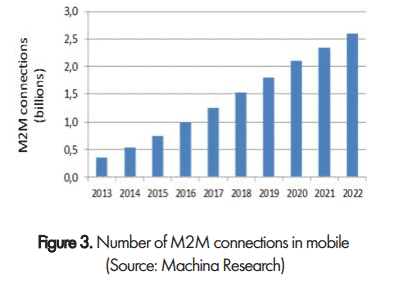5G requires higher values of QoS parameters to meet the objectives of 5G mobile networks
5G – the new generation of mobile networks – is expected to appear on the market by 2020. 5G networks will introduce high quality of service (QoS) levels in the context of:
- Increased speeds;
- Capacity of mobile networks; and
- Growth of wireless devices.
QoS refers to the technologies that manage data traffic by reducing latency, packet loss, and jitter on the network. It prioritizes data on the network and manages various network resources. Enterprise networks use QoS to meet the traffic requirements of sensitive applications and prevent quality degradation caused by packet loss, jitter and delay.
Role of QoS in 5G network services
According to the leading specialists working on international 5G projects, video services, such as HD and UHD video, will have a dominant position among the services rendered in 5G networks. Traffic volume of video services is estimated from 66-75% of the total traffic on the 4G network. This includes 33% for YouTube and 34% for clear video, as well as CCTV monitoring in M2M (Machine-to-Machine) networks. The growth of video services traffic volume requires a data transmission speed of up to 10Gbps (Gigabits per second) on the network.
Additionally, the volume of mobile M2M connections will grow from 2.1 billion in 2016 to 6.1 billion in 2021. According to forecasts, in 2022, mobile operators will have more than 2.6 billion M2M connections. Forecasters also report that the share of M2M connections to the total number of connections in mobile operators’ networks will increase from 5% to 22% in 2022.
M2M connections will grow by 2022 Source
Europe’s 5G development strategy plans to enable subscribers, by 2025, to choose how to connect to television broadcasts – 5G modem or antenna with DVB-T (Digital Video Broadcasting — Terrestrial). This tasks which will require a suitable quality management mechanism.
Thus, developers working on improving the quality management mechanism will focus on video and M2M services traffic. Efforts will be made to improve the quality checking algorithms and create new quality assessment methods.
Improvement in QoS with 5G
Considering the growth in video and M2M connections, QoS management mechanisms in 5G networks should be able to prioritize video and VOIP (Voice over Internet Protocol) traffic over web search traffic and other applications which are tolerant to quality.
Video streaming without buffering is extremely sensitive to network delay. As a result, one of the critical parameters that determine QoS requirements is the total packet delay budget (PDB) on the radio access network (RAN) air interface. This is treated as the maximum packet delay with a confidence level of 98%.
The following are the expectations of the 5G QoS parameters:
- Speed/throughput of 10Gbps, and a target of 20Gbps
- End-to-end latency reduced to 1-10 milliseconds and 0.5 milliseconds on physical networks
- 100% network availability
- Reliability parameters expected to be 0.00001 in a 1 millisecond period, which are 0.01 in 4G
- Jitter reduced to 10-100 microseconds
- Bandwidth from 100Kbps for small sensor devices to several hundred megabits per second for industrial robot cameras
To achieve these QoS values, more efforts are required on 5G. Developers are working on reducing packet size, propagation time, and transmission time as low as possible. Telstra, Australia’s leading telco, is working on the country’s first 5G mobile technology. This technology is expected to connect devices faster and deliver higher quality at ultra-fast speeds.
Similarly, Ericsson, a Swedish telecommunication and networking company, is adding new hardware and software to their Radio System portfolio to enhance the agility and speed of 5G network rollouts. Ericsson Spectrum Sharing employs unique scheduler algorithms that introduce 5G smoothly as traffic demand moves from 4G to 5G, thereby allowing telcos to fully leverage spectrum assets and Ericsson Radio System hardware. By intelligently introducing 5G within an existing 4G carrier, service providers can turn on nationwide 5G any time.
Final words
The emergence of 5G networks will focus on significant improvements of key metrics in mobile networks, including QoS. To maintain the principles of QoS control during the transition from 4G to 5G, the efforts of 5G developers should be focused on the virtualization of network functions, which are responsible for the management and control of QoS in the network.
Another direction for development will be algorithms for traffic classification that will support the market’s changes, including change in demand for services and needs of customers. Future mobile services will be grouped around video services and services based on the massive use of M2M devices in most industries and consumers’ households. To fulfill any promises, or meet any expectations, of extreme 5G speeds, QoS improvements will be a necessary focus for telecommunications companies.
